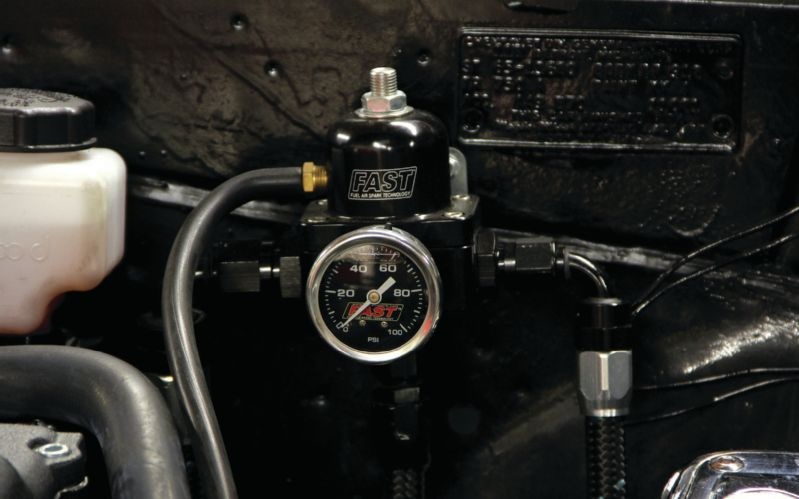A fuel pressure regulator is a device used to control the pressure of fuel supplied to the fuel injectors on an engine, even during dramatic changes in fuel demand. Controlling this pressure is needed so that the fuel injectors can receive and dispense fuel at a known rate. This fuel pressure regulator is included in every fuel-injected vehicle. Fuel injectors are fixed in the vehicle and need an exact amount of pressure at the nozzle, during operation. Fuel pressure regulators help in maintaining set pressure for smooth running of the vehicle.
The fuel pressure regulator is a cylindrical metal object linked to the fuel rail. It is the final component of the engine section supplied with fuel. It has a void hose attached to it. It serves the function of providing the additional pressure against the spring. This space ensures that there is a reduced amount of pressure against the fuel coming inside the regulator when the vehicle is stationary. The fuel inflowing the regulator increases as soon as the vehicle accelerates.
A fuel regulator is consisted of eight essential parts, they are a threaded adjuster and locking nut, vacuum port, stainless spring, diaphragm membrane, bypass valve, fuel inlet, excess fuel port and pressure port. The regulator is equipped with a threaded adjuster and locking nut at the top of the regulator, which alters the preload on the spring. Increase the preload will increase fuel pressure. Vacuum port provides the boost or vacuum pressure to the top of the diaphragm. The stainless spring applies pressure to the diaphragm. This is called base pressure and will be set on engine idle, commonly around 3 bar. Usually made of nitrile or rubber, the diaphragm seals the regulator and is responsible for moving the bypass valve to actually alter the fuel pressure. Attached to the diaphragm, bypass valve controls the flow to the return port. Higher boost will reduce the amount of excess fuel to cause higher fuel pressure. Some regulators have two or more inlets; they are used to handle engines with more than one fuel rail. The excess fuel port allows the bypass fuel to return to the surge tank, fuel tank or fuel cell. Pressure port id used for attaching a fuel pressure gauge or a fuel pressure sensor for digital output.
So how these parts work together to achieve the designed goal of a fuel regulator?
The spring inside the regulator housing pushes against a diaphragm, the spring pressure has a preset pressure designed by the manufacturer, so to overcome this pressure, the fuel pump has to pump enough fuel and enough pressure at the same time. The extra fuel is sent back to the fuel tank through the fuel return line. When the vehicle is at idle, the vacuum hose attached to the fuel pressure regulator decreases the pressure level and a negligible amount of fuel is sucked inside the regulator. When you accelerate and the vacuum drops, the fuel pressure increases to allow the engine to have more fuel as it needs it.

What happens if my fuel pressure regulator fails to work correctly
by
Tags:
